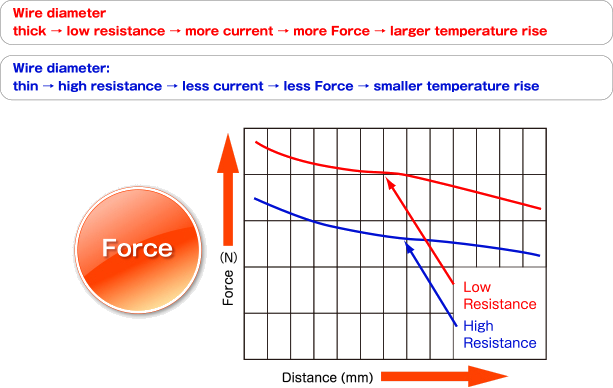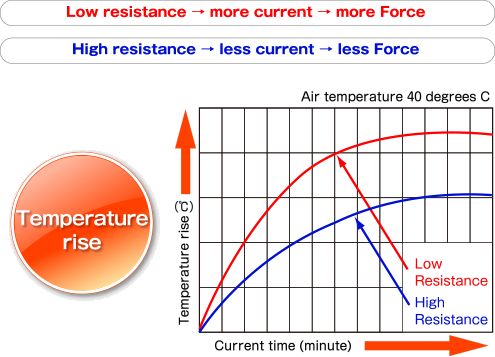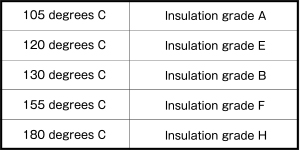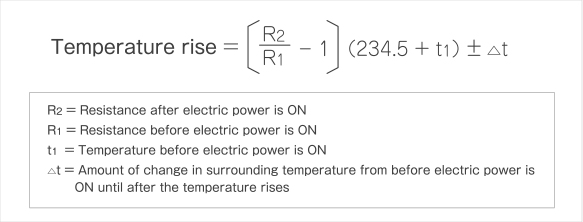Force and resistance
Solenoid Force is impacted by ampere turns. Ampere turns are a function of the current that passes through the coils and the number of turns of copper wire wrapped around the bobbin. The solenoid’s size determines the amount of copper wire that can be used, so the main determinant of Force is the amount of current.
Lower resistance leads to greater current flow. In other words, thick copper wire increases Force. Normally, higher or lower resistance in solenoids of the same size can be compared to judge their Force.






